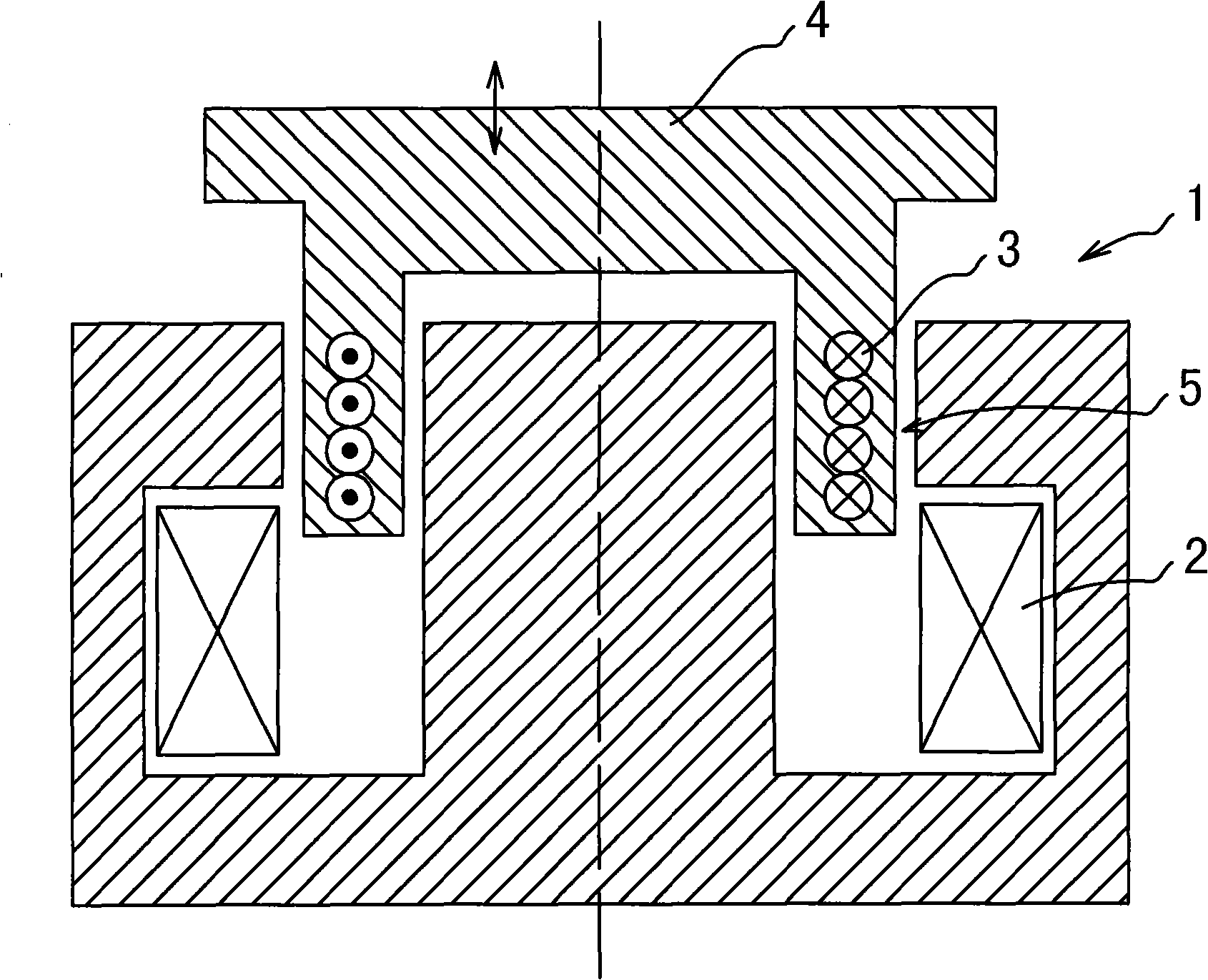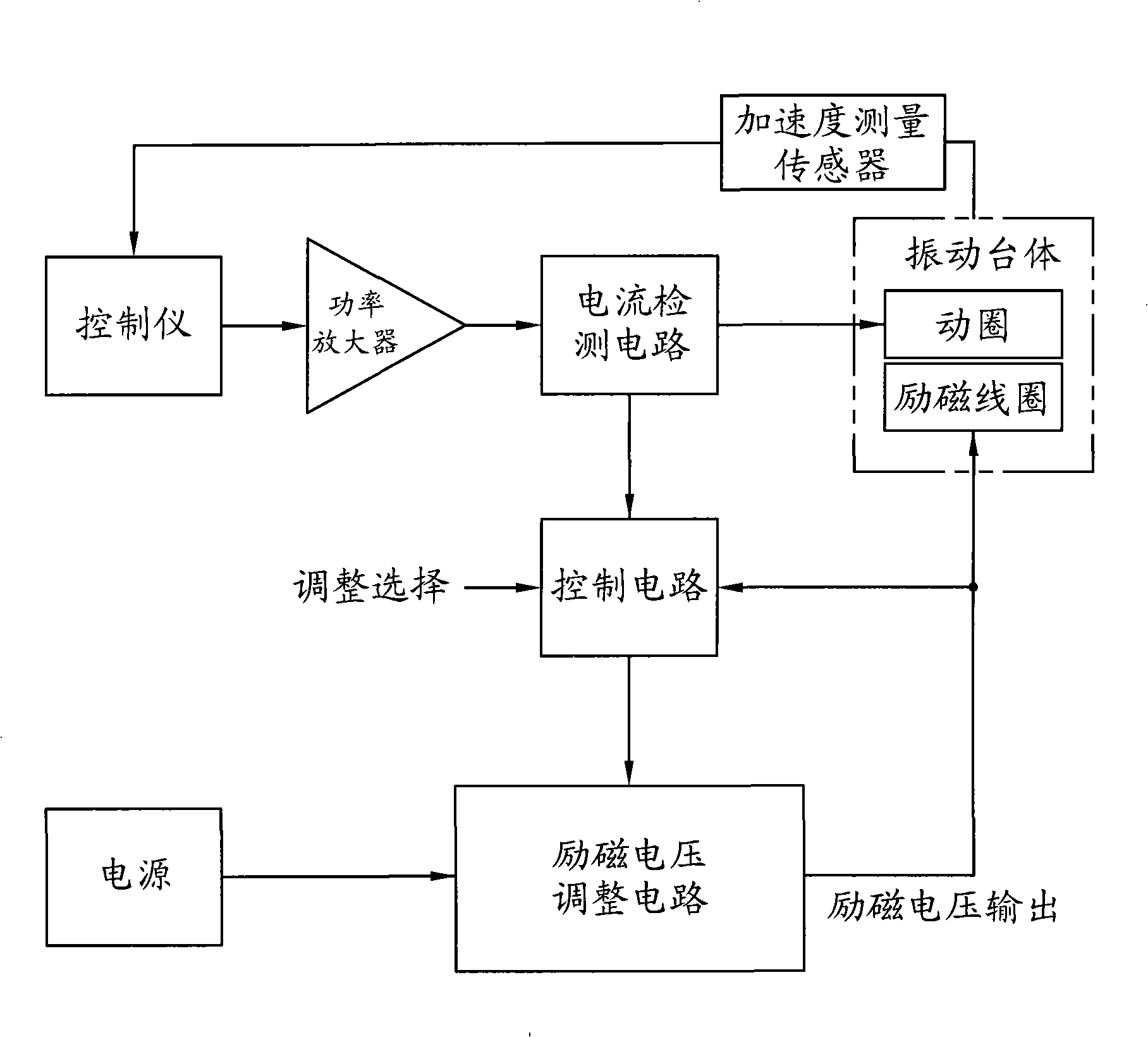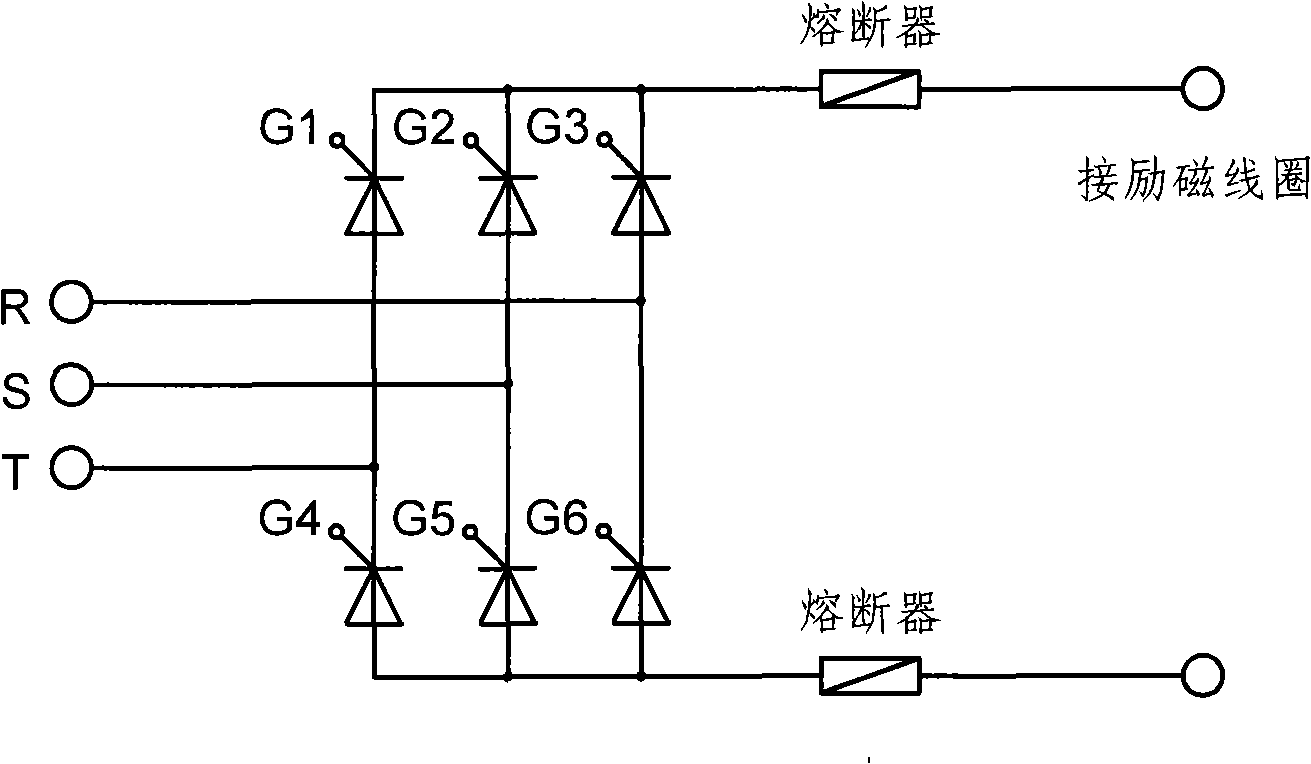Dynamoelectric oscillating table excitation voltage automatic adjusting method
An electric vibration table and automatic adjustment technology, which is applied in vibration testing, adjusting electrical variables, control/regulation systems, etc., to achieve the effects of simple and convenient use, prolonging service life, and saving energy
- Summary
- Abstract
- Description
- Claims
- Application Information
AI Technical Summary
Problems solved by technology
Method used
Image
Examples
Embodiment
[0052] Embodiment: A method for automatically adjusting the excitation voltage of an electric vibrating table
[0053] Assuming that the system is running at full thrust, the rated current value of the moving coil I 2 Is 1000A; rated excitation output voltage V 2 It is 100V; the adjustment coefficient δ is selected as 0.1.
[0054] Such as figure 2 As shown, the excitation voltage automatic adjustment system of the electric vibrating table is mainly composed of a current detection circuit, a control circuit and an excitation voltage adjustment circuit. Among them, the control circuit and the excitation voltage adjustment circuit form a closed-loop control adjustment. In addition, the acceleration measurement sensor, controller and power amplifier constitute a closed-loop control system that automatically increases the moving coil current.
[0055] The method for automatically adjusting the excitation voltage of the present invention is as follows:
[0056] (1) After the t...
PUM
 Login to View More
Login to View More Abstract
Description
Claims
Application Information
 Login to View More
Login to View More - Generate Ideas
- Intellectual Property
- Life Sciences
- Materials
- Tech Scout
- Unparalleled Data Quality
- Higher Quality Content
- 60% Fewer Hallucinations
Browse by: Latest US Patents, China's latest patents, Technical Efficacy Thesaurus, Application Domain, Technology Topic, Popular Technical Reports.
© 2025 PatSnap. All rights reserved.Legal|Privacy policy|Modern Slavery Act Transparency Statement|Sitemap|About US| Contact US: help@patsnap.com



